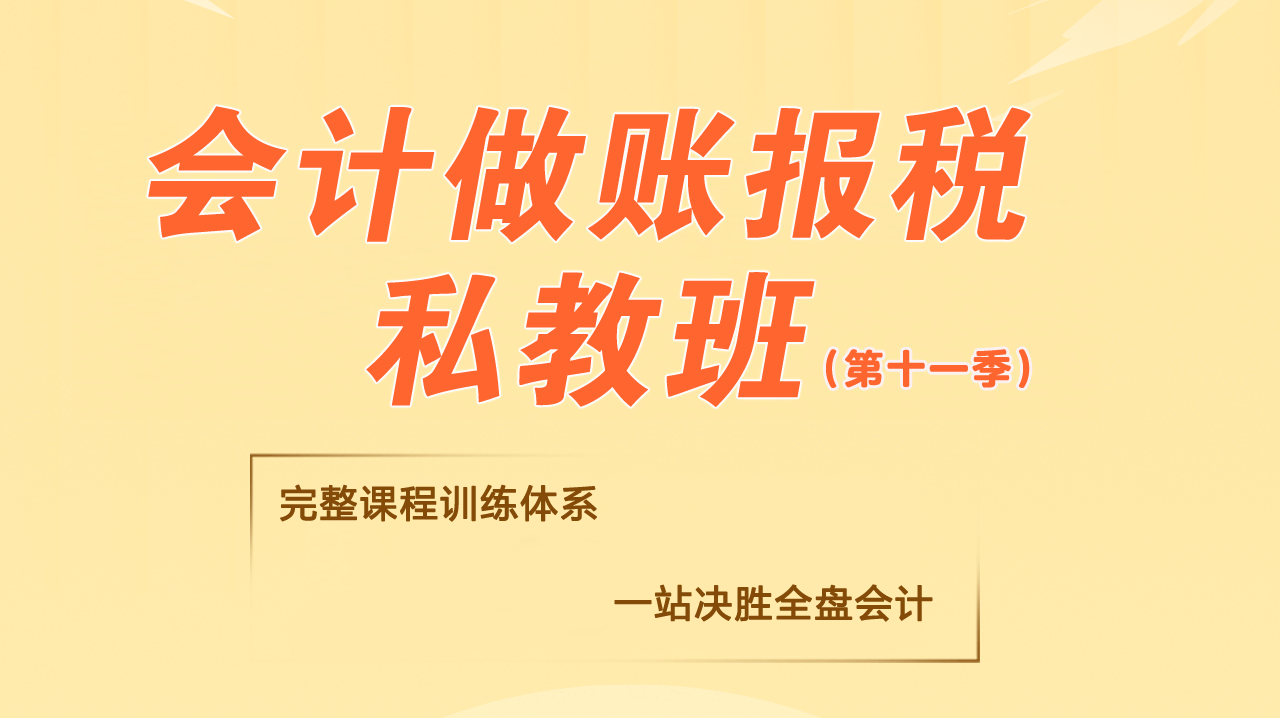中国需求旺盛 象牙贸易死灰复燃(双语)
A long-dormant threat to Africa's elephant population is back with a vengeance, thanks to rising demand for ivory from newly affluent Chinese consumers.
威胁非洲大象数量的活动曾有很长一段时间销声匿迹,现在这些活动又再度卷土重来,而这一切要拜中国新富阶层不断上涨的象牙需求所赐。
Reflecting this demand, ivory prices in China have soared to as high as US$7,000 a kilogram in 2011 from US$157 a kilo in 2008, according to the Environmental Investigation Agency, a nongovernmental organization based in London. Estimates from other researchers and NGOs put ivory prices in China as low as US$300 to US$750 a kilo, which nevertheless reflects at least a 100% increase in price over three years.
据伦敦的非政府组织环境调查机构(Environmental Investigation Agency)的统计,中国的象牙价格已从2008年每公斤157美元飙升至2011年每公斤7,000美元,从中可以看出中国对象牙的旺盛需求。据其它研究者和非政府组织的估计,中国的象牙价格最低也在每公斤300美元和750美元之间,即使按照这个数字,也说明中国的象牙价格在三年时间里至少涨了一倍。
Official data on the extent of the ivory trade are difficult to come by, as much of the trade is illegal. From 2009 to June 2011, mainland China and Hong Kong seized more than 6,500 kilograms of illegal ivory in four large shipments, according to a report released by the Convention on International Trade in Endangered Species of Wild Fauna and Flora, or Cites.
由于很多象牙贸易属违法活动,因此很难得到有关象牙贸易活跃程度的官方数据。据《濒危野生动植物种国际贸易公约》(Convention on International Trade in Endangered Species of Wild Fauna and Flora,简称:Cites)发布的报告,2009年至2011年6月,中国内地和香港查获了四大批货物,缴获非法象牙6,500多公斤。
“China has overtaken Japan as the world's largest consumer market for illegal ivory products,” the Cites report said.
这份报告说,中国已超过日本,成为世界上非法象牙产品最大的消费市场。
Malaysian authorities this month confiscated nearly 700 African elephant tusks destined for China from Tanzania, the third seizure of illegal ivory since July, officials and wildlife activists said, according to the Associated Press. A week earlier, Hong Kong authorities had seized $1.6 million in African ivory from a container that arrived by sea from Malaysia.
Getty Images2011年9月12日,伦敦动物园“濒危物种”展览会上展出的由非法像牙雕刻而成的大象。该展览由“魅力行动”(Operation Charm)主办,该机构是一个大都市警方合作组织,旨在打击濒危野生动物非法贸易。这次活动将历时一个月。据美联社(Associated Press)报道,官员和野生动植物保护人士说,马来西亚当局本月没收了近700根从坦桑尼亚运往中国的非洲象牙,这是自今年7月以来查获的第三批非法象牙。一周前,香港当局查获了一批价值160万美元的非洲象牙,这些象牙装在一个从马来西亚经海路抵达香港的集装箱内。
In China, sales have been driven by ivory's appeal as a traditional symbol of wealth and status. “Lately, we've had a lot of mainland Chinese customers,” said Alice Chan, sales manager at Exquisite Crafts, an antique shop in Hong Kong filled with figurines carved from both elephant and mammoth ivory, including two enormous carved tusks on display in the shop window. “They're rich now.”
在中国,象牙历来是财富和地位的象征,这种独特的吸引力推动了象牙销售。香港古玩店Exquisite Crafts的销售经理Alice Chan说,最近有很多内地客户来我们这里,他们现在很有钱。店里随处可见由大象牙和猛口象牙制成的小雕像,橱窗里还陈列着两根巨大的经雕刻的象牙。
Mammoth ivory is legal to import and export from Hong Kong, but Ms. Chan says that the Chinese typically want elephant ivory, which is considered of higher quality. Cites says almost all of the current demand for elephant ivory comes from the Chinese market, including Hong Kong and Macau. The Geneva-based Cites is an international agreement among 175 governments, including the U.S. and China, that aims to ensure that international trade in wild animals and plants doesn't threaten their survival.
从香港进出口猛口象牙属合法贸易,但Chan说,中国人一般喜欢大象牙,觉得大象牙质量更好。Cites说,目前几乎所有的象牙需求都来自中国市场,包括香港和澳门。Cites是一项国际协议,秘书处设于瑞士日内瓦,目前共有包括美国和中国在内的175个缔约成员,协议宗旨是确保野生动植物的国际贸易不会危及它们的生存。
Outlets that legally sell elephant ivory from old stocks in China are supposed to be licensed and monitored by the government, with certificates accompanying all legal ivory. Taking ivory out of China or importing it into most other countries, including the U.S., is illegal.
中国合法出售原有库存象牙的零售店应该都获得了中国政府的准许并受到政府监管,所有合法象牙都配有证书。从中国携带象牙出境或包括美国在内的绝大多数国家进口象牙都是非法的。
“More than 90% of wildlife seizures made by the Chinese Customs in recent years have involved elephant tusks and ivory carvings,” said Wan Ziming, a Chinese government employee and director of Cites Enforcement Coordination for China.
中国濒危物种进出口管理办公室Cites执法培训处处长万自明说,中国海关近年来查获的90%以上的野生动植物都与象牙和象牙雕刻品有关。
Since the late 1970s, Africa's elephant population has fallen by more than half, from about 1.2 million to between 472,000 and 690,000 today, according to the 2007 African Elephant Status Report, which is sponsored by a network of multiple governments, NGOs, and volunteers.
据2007年《非洲象状态报告》(African Elephant Status Report),20世纪70年代末以来,非洲大象种群数量已经从120万头左右下降到今天的47.2万头到69万头。《非洲象状态报告》是在多个政府、NGO和志愿者资助下完成的。
In 1989, Cites banned the international ivory trade to try to curb the rapid decline in Africa's elephant population. For years, experts considered that ban, to which China is one of the 175 signatories, a success in reducing the poaching of elephants, as the number of illegally killed elephants fell drastically and the total population became stable, albeit at a much lower volume than before the rampant poaching of the 1970s and 80s. But newfound interest in ivory from China is reversing those gains, researchers and NGOs say.
1989年,Cites对国际象牙贸易下达禁令,以求遏制非洲象种群数量的快速下降。中国是这条禁令的175个签署国之一。多年来,专家都认为禁令起到了减少偷猎象牙活动的作用,因为被猎杀的非洲象数量急剧下降了,总量也趋于稳定,只是数量远远低于70年代和80年代疯狂盗猎之前的水平。但研究人员和NGO说,中国人对象牙方兴未艾的兴趣正在扭转这些进步。
“Looks like now that we've had almost 20 years of cease-fire, people have become complacent, and we need renewed interest,” said Iain Douglas-Hamilton, founder and chief executive officer of Save the Elephants, an independent research organization based in Kenya.
肯尼亚独立研究机构“拯救大象”(Save the Elephants)创始人兼首席执行长道格拉斯-汉密尔顿(Iain Douglas-Hamilton)说,就像是我们已经停火接近20年,所以大家都变得自满起来;我们需要重新加以关注。
Elephant killings in the first sixth months of this year in the Samburu National Reserve in Kenya and surrounding areas are already double the level of any year in the past decade, he said. Mr. Douglas-Hamilton and his team of researchers count by hand the dead bodies of slain elephants in the areas they study, though he declined to comment on exact numbers.
他说,今年前六个月,肯尼亚桑布鲁国家保护区(Samburu National Reserve)及周边地区的大象猎杀数量已经是过去10年任何一年的两倍。道格拉斯-汉密尔顿和他的研究团队在他们研究的区域内人工清点被杀大象的数量,但他拒绝谈及具体数字。
“All hell's breaking loose,” said Cynthia Moss, a researcher who has studied elephants and their conservation in Kenya's Amboseli National Park for 30 years. “Up north, we lost 23 elephant in the last two weeks.”
研究人员莫斯(Cynthia Moss)30年来一直在肯尼亚安博塞利国家公园(Amboseli National Park)研究大象和大象的保护。她说,什么都失控了;在北边,过去两个星期我们就失去了23头大象。
“China has a huge middle class now,” Ms. Moss said. “People in China never bought ivory before, because they couldn't afford it─they carved it, but it all went out to Europe. Now it's being bought in China by the Chinese, and that's a disaster.”
莫斯说,中国现在有了一个庞大的中产阶级;中国人以前从来不买象牙,因为买不起;他们雕刻象牙,但这些象牙全都去了欧洲;现在是中国人在中国购买象牙,这是一场灾难。
Abetting the traffic in illicit ivory is a surge of Chinese investment in Africa, a source of key mineral and other resources. South Africa's Standard Bank forecasts that investment from China in Africa could hit $50 billion by 2015, up 70% from 2009.
刺激这种非法象牙贸易的是中国对非洲投资的急剧增加。非洲是矿产等资源的关键来源。南非标准银行(Standard Bank)预计,到2015年,中国对非投资可能会达到500亿美元,较2009年增长70%。
“As China expands its presence in Africa in the form of investments and infrastructure development in remote areas, and also areas with significant elephant populations, the incentive or temptation increases for the Chinese worker to look for ivory,” said James Isiche, East African director of the International Fund for Animal Welfare. Associated Press本月早些时候,马来西亚海关工作人员检查在吉隆坡市郊巴生港缴获的象牙。马来西亚当局没收了总价
值约100万美元的共约700支??非洲象牙,这些象牙原本运往中国。这是自7月份以来马来西亚第三次缴获非法像牙.国际爱护动物基金会(International Fund for Animal Welfare)东非部总监艾斯奇(James Isiche)说,随着中国扩大在非洲的投资,并在大象种群数量较多的偏远地区加大基础设施开发,中国工人寻找象牙的动力或诱惑就会增加。
The Kenyan government burned approximately five tons of seized elephant ivory on July 20, in a move meant to illustrate how serious it is about stopping the illegal trade in ivory and the poaching of their elephants.
7月20日,肯尼亚政府把收缴的近五吨象牙付之一炬,希望以此证明它对于阻止非法象牙贸易、阻止其大象被偷猎的态度是多么认真。
Chinese appetite for ivory was whetted in 2008 when Cites approved a one-off sale of ivory stocks that were old or had been collected from already-dead elephants. Four southern African nations sold about 108 tons of ivory to Japan and China, flooding the market for the first time in almost 10 years.
中国人对象牙的爱好在2008年时被刺激起来,当时Cites批准一次性清理出售象牙库存,这些象牙或是以往留下的旧货,或了来自已经死去的大象。南部非洲的四个国家共向日本和中国出售了108吨象牙,这是近10年来首次有大量象牙充斥市场。
Now, China's ivory consumer base appears to be expanding, says Wang Juan, an official in the Beijing office of the International Fund for Animal Welfare.
国际爱护动物基金会(International Fund for Animal Welfare)北京办事处的工作人员王娟说,中国的象牙消费人群现在似乎正在扩大。
'Traditionally, we think it's always wealthy people who are the main buyers for ivory products,' Ms. Wang said. 'But actually, there are many young people buying ivory, too.' 她说,我们以往总是认为,富人是象牙制品的主要购买者,但实际上有许多年轻人也在买象牙。
Some Chinese media, she added, often promote the collectible value of ivory, further stimulating demand.
她还说,一些中国媒体经常宣传象牙的收藏价值,这进一步刺激了象牙需求。
Two companies in Beijing that offer custom ivory carving services both declined to comment.
北京两家提供定制象牙雕刻服务的公司都拒绝置评。
Over the past 15 years, around 20 smugglers responsible for illegal commercial import of ivory have received the maximum penalty for wildlife smugglers in China, which is life imprisonment, according to Mr. Wan. Most offenders who illegally take small amounts of ivory into China are fined, and the ivory simply confiscated, according to Mr. Wan.
中国濒危物种进出口管理办公室Cites执法培训处处长万自明说,过去15年中,约有20名从事象牙非法商业进口的走私者受到了中国针对野生动植物走私者的最高处罚,被判处无期徒刑。万自明说,大多数因携带少量象牙进入中国而触犯法律的人受到了罚款处罚,他们携带的象牙被没收。
And for every seizure that gets prosecuted, 20 or 30 others don't, said David Higgins, manager of Interpol's environmental crime program.
国际刑警组织(Interpol)环境犯罪项目的负责人希金斯(David Higgins)说,中国每个走私的象牙被没收、走私者被起诉的案子,都对应着20或30起象牙走私者未被起诉的案子。
“I think the public gets confused when they see a seizure of five tons of ivory,” he said. “Half the time, if not more, we never have an offender. Customs agencies just do the seizures, and there are no follow-up investigations.”
他说,我认为公众看到一起没收五吨走私象牙的案子时会感到困惑,至少有一半的时候,海关只是将走私的象牙没收了事,不再进行后续调查,从未有人去追究谁是犯罪者。
A lack of proper communications between national police bodies and national wildlife or environmental enforcement agencies is one reason why prosecutions are rare, Mr. Higgins said. In addition, wildlife crime is rarely a high priority for prosecutors.
希金斯说,中国走私象牙的人之所以很少被起诉,国家的公安部门和野生动植物或环境执法部门间缺乏适当的沟通是一个原因。此外,针对野生动植物的犯罪行为也很少得到中国检查部门的高度重视。
According to a study released last month by Elephant Family, a charity, the Aspinall Foundation and the Columbus Zoo and Aquarium, a survey of ivory for sale in Guangzhou, China, counted 6,437 elephant ivory objects on display for retail sale, of which 3,947 were being sold without ID cards, and therefore illegally.
一家名为“大象家族”(Elephant Family)的慈善机构、英国阿斯皮纳基金会(Aspinall Foundation)、哥伦布动物园暨水族馆(Columbus Zoo and Aquarium)上个月发布研究报告说,一项关于中国广州象牙销售情况的调查发现,有6,437具象牙被展示出来零售,其中3,947具没有产品认证标牌,因此属非法销售。
“Decreasing demand means educating hundreds of millions of Chinese,” Mr. Isiche of the International Fund for Animal Welfare said. “We did a survey and found that 70% of Chinese consumers did not know that elephants were killed for ivory. Some people thought elephants lose tusks the way people lose teeth.”
国际爱护动物基金会的艾斯奇说,减少象牙需求意味着要对几亿中国人进行教育。他说,该机构的一项调查发现,70%的中国消费者不知道大象会因人们为获取其象牙而被杀。一些人认为,大象的长牙会像人的牙齿一样自然脱落。
In response, Mr. Isiche last month launched a “Green Tour Africa” campaign with the Kenyan Embassy in China to ensure that Chinese citizens receiving a visa to visit or work in Kenya would be educated about the ivory trade.
针对这种情况,艾斯奇上个月与肯尼亚驻华大使馆发起了一项名为“非洲绿色之旅”的行动,以确保获得前往肯尼亚旅行或工作签证的中国公民能够获得有关象牙贸易的教育。



